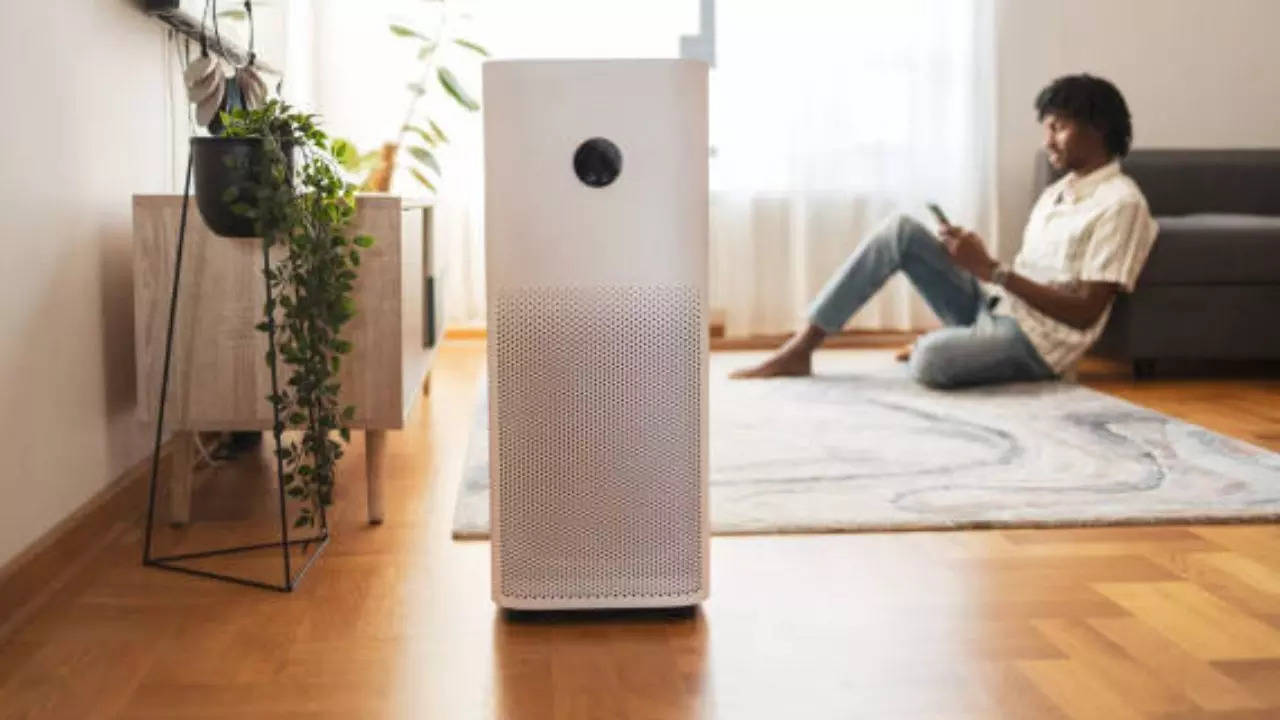
Can air purifiers protect you from dust allergies? Here’s what the experts say (Image credit: iStock)
According to the Central Pollution Control Board (CPCB), Delhi-NCR is still covered in a thick layer of smog and the air quality across the entire National Capital Region remains in the ‘very poor’ category. The city’s Air Quality Index (AQI) showed worrying figures, further raising concerns about the city’s pollution crisis.
More than 75 percent of residents have reported respiratory problems like asthma, dust allergies and persistent cough. Due to poisonous air, cases of heart related problems and stroke have also increased. The air quality index (AQI) has reached above 500, leading to emergency measures like closing of schools.
The only way to deal with extreme air quality is to install an air purifier. Air purifiers work as a life saver as they reduce allergens, pollutants and harmful particles which help in maintaining the room air quality. It may help people suffering from asthma and other respiratory problems but can it also help reduce dust allergies? We contacted Dr. Suleman Ladhani, Pulmonologist, Wockhardt Hospital, Mumbai Central, and Kuldeep Kumar Grover, Head, Critical Care and Pulmonology, CK Birla Hospital, Delhi, who shared their inputs on this.
Can air purifiers help with dust allergies?
“Yes, air purifiers can help a lot with dust allergies. These are designed to trap airborne particles such as dust, pollen, pet dander and other allergens that cause allergies. High-efficiency particulate air (HEPA) filters in air purifiers are particularly effective, capturing up to 99.97 percent of particles as small as 0.3 microns. By reducing the concentration of allergens in the air, air purifiers can reduce symptoms such as sneezing, coughing and watery eyes, Dr. Ladhani said.
How do air purifiers work?
Dr. Grover explains that when you inhale dust particles, your immune system can overreact, causing sneezing, congestion, or itchy eyes. By purifying the air, this device reduces these allergens in your living space and provides a clean and safe environment for people with dust allergies. Some advanced models include activated carbon filters, which eliminate odors and VOCs, further improving indoor air quality.
Best air purifier for home
Air purifiers are generally safe and can improve indoor air quality. However, Dr. Ladhani shares a few things to keep in mind:
Ozone Emissions: Avoid using models that emit ozone as it irritates the lungs.
Filter Maintenance: Be sure to change the filter regularly for optimal efficiency and not cause allergies.
Humidity level: If the air is dry, combine an air purifier with a humidifier so you can stay comfortable in the room.
How long can you stay in the room where the air purifier is located?
Both experts agree that air purifiers should ideally be kept on all the time, and not just when you enter a room, to maintain optimal air quality. Continuous operation helps continuously remove pollutants, allergens and fine particles from the air. “If you switch off the device at irregular intervals, it reduces its effectiveness. When using an air purifier, make sure it’s directed towards areas where you spend most of your time – like where you sit, work or sleep,” said Dr. Ladani.
Tips to keep in mind with air purifier
Dr. Grover explains that although air purifiers cannot completely remove dust because new particles are constantly deposited from outdoor or indoor activities, they do reduce the concentration of allergens in the air, thereby relieving symptoms. Is available.
– Place it in the room where you spend the most time, such as the bedroom. Keep them away from walls or obstructions that may hinder the smooth passage of air.
– Select an appropriate filter: HEPA filters can help successfully capture dust particles and allergens.
– Room Size: Consider purifier size appropriate for room size for successful operation.
– Keep doors and windows closed: Seal the space when the purifier is running to reduce outdoor pollutants.
– Clean and replace filters: Clean filters according to manufacturer’s guidelines or replace them if necessary to maintain their efficiency.
– Regular cleaning: Vacuum surfaces with a HEPA filter to prevent dust accumulation.
– Avoid overdependence: Use the purifier in conjunction with other methods such as regular cleaning and controlling humidity to effectively reduce dust allergies.
Get the latest news live on Times Now with breaking news and top headlines from around the world.



